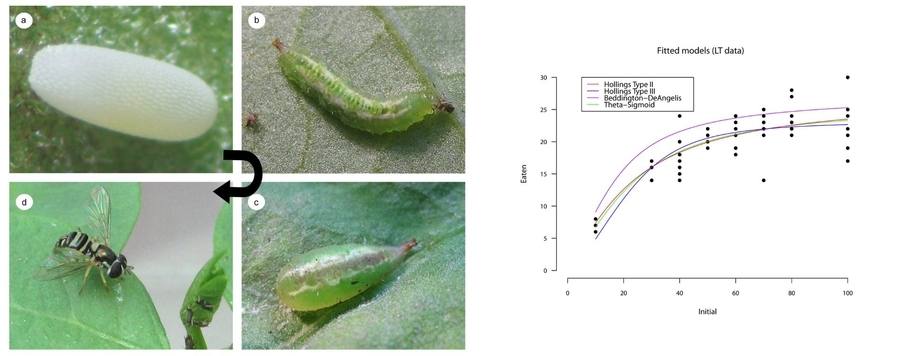
Life table and predation rates of Allograpta exotica
Larvae of Allograpta exotica (Wiedemann, 1830) (Diptera: Syrphidae) are important natural enemies of common agricultural pests such as aphids (Hemiptera: Aphididae). Life history, life table and functional response of A. exotica were determined using the cowpea aphid Aphis craccivora Koch, 1854 as prey under controlled conditions of temperature, humidity and light. The average recorded duration of A. exotica development was 2.0, 7.4 and 5.7 days for eggs, larvae and pupae respectively, and 15.04 days from egg to adult emergence. The adult longevity was not significantly sex dependent, but imagoes lived longer than in previous studies. The offspring sex ratio was favorable to males. The mortality and survival rate were recorded on a daily basis for all immature stages and adults. The age specific survival rate was determined and the highest mortality occurred in eggs followed by mortality in 1st and 2nd instar larva. Moreover, in the present study different levels of aphid densities 10, 30, 40, 50, 60, 70, 80 and 100 were used to calculate the functional response. Based on logistic regression analyses the three instar larvae and the whole larval stage (first to third instar) exhibited a type II functional response. Handling time was shortest for the third larval instar followed by second and first instars. Potential use of A. exotica in augmentative biological control is discussed.






